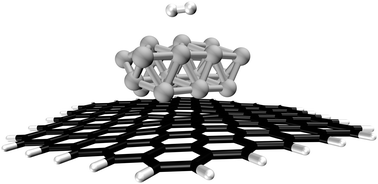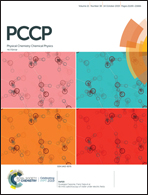A quantum chemical study of hydrogen adsorption on carbon-supported palladium clusters†
Abstract
A key step for achieving better insight into catalytic hydrogenation reactions is to understand in detail the process of hydrogen adsorption on the catalyst. The present article focuses on hydrogen adsorption on carbon-supported palladium clusters, which are nowadays one of the most common catalysts in industrial applications. Density functional theory is applied to study Pd6 and Pd21 clusters to reveal the influence of the carbon support material on the properties of the catalyst as well as on the mechanisms and energetics of the hydrogen adsorption. In general, a stepwise hydrogen adsorption process is observed consisting of molecular adsorption followed by dissociative chemisorption. The carbon support material does not noticeably affect the reaction mechanisms, but has a large influence on energy barriers and preferential adsorption sites. Our comparison of Pd6 and Pd21 systems reveals that small clusters, such as Pd6, are able to model some but not all important properties of palladium nanoparticles and, therefore, it is essential to also study larger cluster sizes.



 Please wait while we load your content...
Please wait while we load your content...